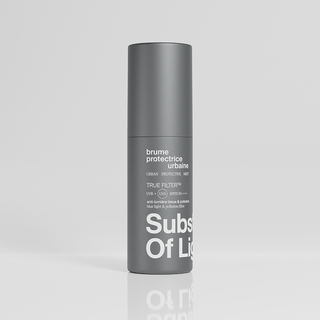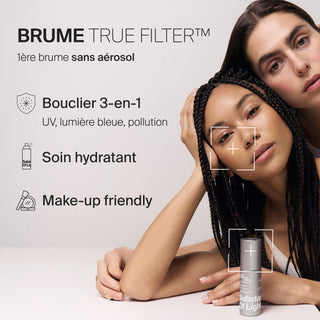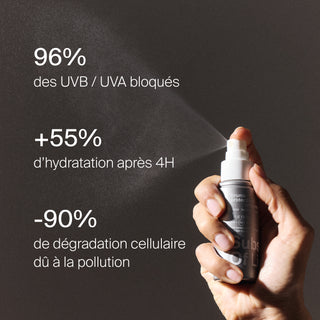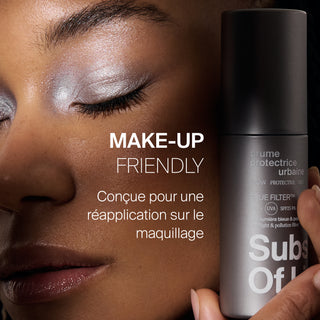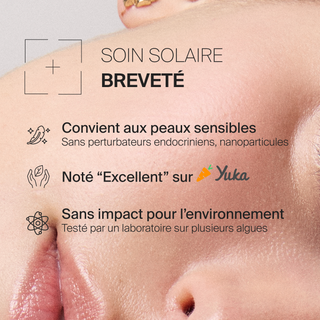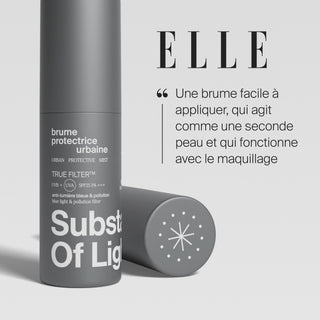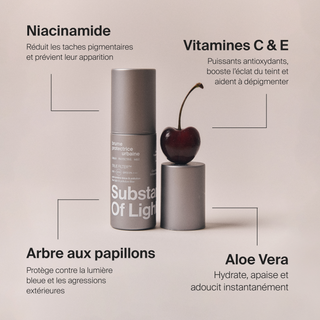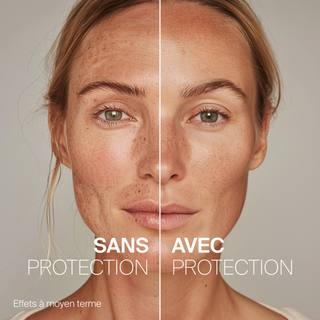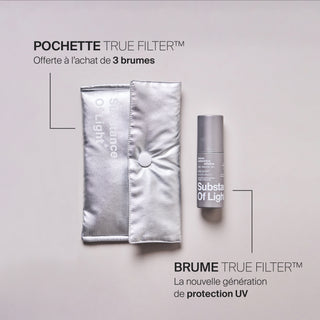Introduction
When it comes to sun protection, the amount and frequency of application are crucial aspects to ensure effective defense against UV rays , blue light , and air pollution. Adopting the right strategy can make the difference in preserving the health of your skin. In this article, we will explore general recommendations and nuances to consider based on different factors, while highlighting the effectiveness of TRUE FILTER™ for optimal protection.
Ideal quantity and frequency of application
The ideal quantity
Applying the correct amount of product to exposed areas is essential to ensure adequate protection. Medical advice recommends using 2 mg/cm2 of skin, which is equivalent to approximately 5-6 sprays of TRUE FILTER™ to effectively cover the face from a distance of 15-20 cm. It's important to note that many people only apply a fraction of this amount, reducing the effectiveness of sunscreen.
The optimal application frequency
The frequency of reapplication depends on several factors. If you are at the beach or in the mountains , it is recommended to reapply every 2 hours and after each swim. In urban environments, especially in the city, it is essential to reapply throughout the day to maximize the effectiveness of the product. Even when staying indoors , the use of sunscreen on all exposed areas is necessary, as UV rays can penetrate glass. If you work near a window or are exposed to blue light, application every four hours is recommended.
Factors influencing application frequency
The phototype
The variability of skin reactions according to phototypes influences the frequency of application. Light skin requires more frequent protection than dark skin.
Family history of skin cancer
In the presence of a family history of skin cancer, vigilance is increased, involving regular consultations and the rigorous application of protective measures, even for dark phototypes. Applying rigorous daily sun protection becomes an essential necessity to reduce the risk of skin cancer.
Daytime UV Index (UVI)
Deciding whether or not to apply sunscreen based solely on the appearance of the sky is a mistake. The UV index isn't simply a function of cloud cover; it's the result of a complex equation that includes solar angle, altitude, cloud cover, stratospheric ozone, albedo, and shade. Don't be fooled: UVA rays persist, penetrating clouds, windows, and even your skin.
Contrary to popular belief, clouds do not effectively protect against the sun's rays. A light veil of cloud only blocks 5 to 10% of the sun's rays and can even increase the risk of sun damage. To effectively counter photoaging, always opt for complete sun protection , regardless of weather conditions.
Environment and lifestyle habits
Daily activities, such as working on a screen near a window or cycling to work, significantly affect light exposure. These situations require appropriate protection to counter the harmful effects of invisible and visible light , highlighting the importance of a diversified sun protection strategy.
Be careful with digital, since we know that the blue light emitted by screens , especially for light skin, contributes to skin aging by generating oxidative stress and free radicals (ROS) in synergy with UVA. For dark skin, it can lead to hyperpigmentation and the appearance of spots . Thus, indoor and outdoor protection is crucial to prevent these harmful effects, regardless of phototype.
TRUE FILTER Urban Protective Mist: the precise, contactless solution for reapplying your sunscreen
Discover the perfection of renewing your sun protection with TRUE FILTER™ . Thanks to its innovative spray system, 5-6 sprays are enough for precise application , even over makeup . Get an invisible, non-greasy protective veil , suitable for all phototypes , even the darkest. Reapply your protection easily throughout the day, even if you are wearing makeup. And don't forget, with its 50 ml travel size , TRUE FILTER™ slips easily into your bag for sun protection at hand, wherever you are!
Bibliography
- Venosa, Ali. “5 Sneaky Ways You're Being Exposed to the Sun's UV Rays.” The Skin Cancer Foundation, The Skin Cancer Foundation, June 30, 2022, https://www.skincancer.org/blog/sneaky-ways-youre-being-exposed-to-the-suns-uv-rays/
- A. Green, et al. “Sunscreen and prevention of skin aging: a randomized trial” Ann Intern Med. 2013 Jun 4;158(11):781-90. https://pubmed.ncbi.nlm.nih.gov/23732711/
- MR lannacone, MCB Hugues, AC Green “Effects of sunscreen on skin cancer and photoaging” Photodermatol Photoimmunol Photomed. 2014 Apr-Jun;30(2-3):55-61. https://pubmed.ncbi.nlm.nih.gov/24417448/
- E. Mahé et al. “Comparison between UV index measurements performed by research-grade and consumer-products instruments”. Photochemical & Photobiological Sciences. 2010 Apr;9(4):459-63. https://link.springer.com/article/10.1039/b9pp00179d
- A. Isvy, A. Beauchet, P. Saiag, E. Mahé. “Medical students and sun prevention: knowledge and behaviors in France. » J Eur Acad Dermatol Venereol. 2013 Feb;27(2):e247-51 https://pubmed.ncbi.nlm.nih.gov/22827632/



